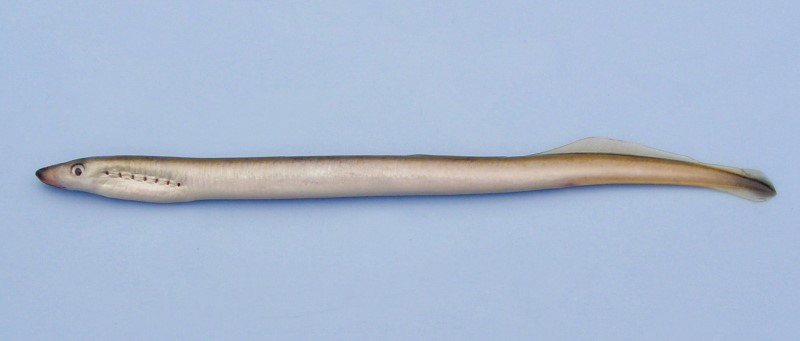Lampreys (Petromyzontidae)

Lampreys belong to a very primitive family that is characterized by a long, snake-shaped body. They have no jaws, but instead possess a sucking disc around the mouth. Lampreys have a single nostril, no scales or paired fins, and two soft dorsal fins. There are seven pairs of external gill openings. The larvae (called “ammocoetes”) are blind and have toothless, hoodlike mouths.
There are two species of lamprey in Connecticut. The sea lamprey is native, whereas the status of the American brook lamprey is uncertain. Each has a larval form that filter-feeds from burrows in the sediment of freshwater streams for several years before transforming into an adult. Only the sea lamprey is parasitic on fishes. The American brook lamprey does not feed as an adult and has only weak, vestigial teeth.
Click on the species' name below to learn more.
Sea Lamprey (Petromyzon marinus) - Native

American Brook Lamprey (Lampetra appendix) - Native?

Due to specialized feeding habits, adult lamprey are generally not suitable for home aquariums. The ammocoetes (larvae) will survive in home aquariums, feeding on the organic muck under the gravel, but aren’t very interesting because they remain hidden. The American brook lamprey is illegal to possess at any life stage because it is a Connecticut State Endangered Species.
Text and images adapted from Jacobs, R. P., O'Donnell, E. B., and Connecticut DEEP. (2009). A Pictorial Guide to Freshwater Fishes of Connecticut. Hartford, CT. Available for purchase at the DEEP Store.

